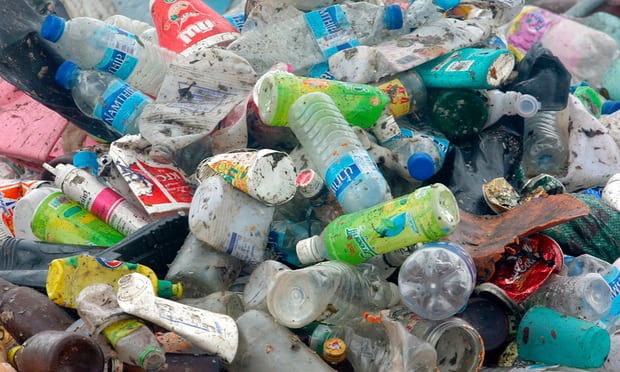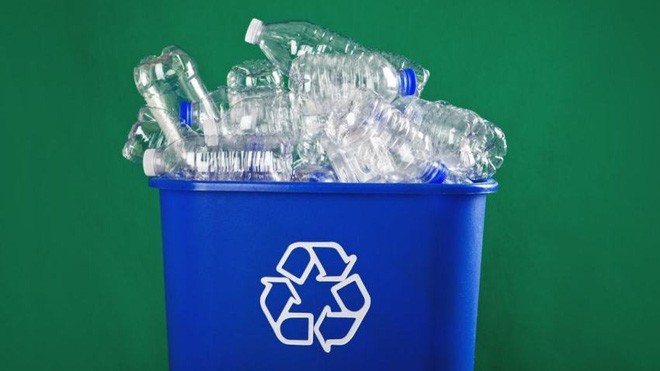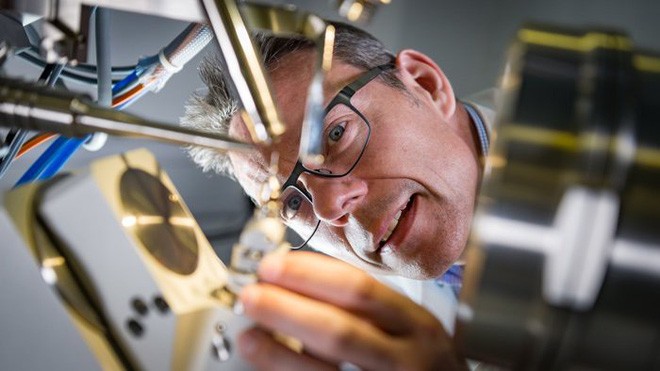Scientists created a mutant enzyme that 'ate' nearly a ton of plastic bottles after a few hours
Scientists have just created a special mutant enzyme capable of breaking down plastic. The context of the discovery of this enzyme is extremely strange: science knows its existence when conducting research on a pile of decaying dry leaves.
Special enzymes can break down plastic bottles into small plastic blocks, materials that can be used in the manufacture of high quality plastic bottles. Current technology of recycling plastic bottles is still very 'simple', so the finished plastic recycling is only enough to make clothes or carpets.

Carbios is the company behind the breakthrough that is capable of changing the production lines of many large companies, and they plan to recycle industrial plastic bottles on an industrial scale within the next five years. The first two big names have teamed up with Carbios to research and produce the new enzyme, Pepsi beverage and junk food and cosmetics firm L'Oréal. Experts have called the new enzyme a big step forward in the field of recycling.
Numerous surveys and researches show the presence of plastic all over the Earth, from the Arctic snow ice to the deep sea floor, affecting the habitat of millions of marine creatures, even can carry risks affecting human health. If the other enzyme is successful on an industrial scale, we will be able to significantly reduce the amount of plastic released into the environment every year.
A new scientific report, published in Nature, talks about the origin and how this mutant enzyme does its magic. The study began with the parameters of 100,000 potential microorganisms, among which species of bacteria grow in the decaying dry leaf clusters (discovered since 2012).
' We completely forgot about it, but it turned out to be the best we have, ' said Professor Alain Marty from the University of Toulouse, France and also the chief scientist of Carbios.
The researchers analyzed the enzyme that the bacterium releases, squeezing it to mutate to enhance the ability to disintegrate PET - which is the chemical that makes our plastic bottles known. The enzyme is still stable at 72 degrees Celsius, the point that is said to be near perfect for rapid decomposition of matter.

In the experiment, the scientific team used the mutant to this optimal mutant decomposing a ton of plastic bottles. They achieve incredible success when 90% of plastic waste is destroyed after about 10 hours. This waste is reused to make a plastic bottle that meets food safety standards.
At present, Carbios has signed a contract with biotechnology company Novozymes, which has the ability to produce special enzymes from mushrooms, with a production cost of only 4% of the cost of making new plastic from crude oil. .
The cost of recycled PET by this method is still higher than the price of virgin plastic, because the cost of collecting and heating the plastic before adding enzymes to digest is still high. But according to Martin Stephan, general manager of Carbios, low-cost recycled plastic is currently very high due to a lack of supply, so the technology still has a place.
' We are the first company to introduce this technology to the market, ' says director Stephan. ' Our goal is to be operational by 2024, 2025, at an industrial scale '.
The importance of plastic is difficult to measure in modern society, but the problem lies in plastic waste. Therefore, and to support a new and highly efficient recycling technology, we need to increase the collection of plastic waste.
Also around this time two years ago, a group of scientists accidentally created an enzyme that could break down plastic bottles. Professor John McGeehan, one of the people behind this study and also the director of the Enzyme Breakthrough Center at the University of Portsmouth, affirmed that Carbios is a leader in the plastic degradation enzyme. He enthusiastically called the new research a major breakthrough.

' A true industrial-scale plastic recycling line is possible thanks to the new enzyme. It is an important step forward in both decomposition speed, efficiency and heat resistance , 'Professor McGeehan said. This will be a technology that will allow us to reduce our dependence on the plastic production line from crude oil, cut emissions and energy consumption into plastic production, in addition to encouraging the collection of plastic bottles for recycling purposes. preparations.
You should read it
- How long does it take waste to decompose?
- The truth about recycling e-waste and its effectiveness
- Manufacturing electric cables from plastic waste - The great plan for the situation of plastic waste pollution in the world today
- While many countries are 'flooded with garbage', the country is importing waste to use
- Microplastics discovered in an 11-year-old ice core in Antarctica
- The Earth has more than 8 billion tons of plastic, weighing about 1 billion elephants
- How are people using plastic to destroy nature?
- What is ABS plastic? Applications of ABS plastic in life
May be interested
- Successfully created new 18K ultra-light gold from ordinary plastic
 recently, researchers at eth zurich have successfully created a super light gold from plastic. this new type of gold retains the same level of purity as that of 18k gold.
recently, researchers at eth zurich have successfully created a super light gold from plastic. this new type of gold retains the same level of purity as that of 18k gold. - Water bottles are safe for your health? Glass bottles, plastic bottles or metal bottles?
 using water bottles made from what materials are safest for health?
using water bottles made from what materials are safest for health? - Science created a shocking red-eye mutant bee
 if one day you suddenly see the red-eyed bees, especially in the southern california region, don't be too surprised, panicked, they are just sudden bees that university scientists california, riverside created.
if one day you suddenly see the red-eyed bees, especially in the southern california region, don't be too surprised, panicked, they are just sudden bees that university scientists california, riverside created. - What is ABS plastic? Applications of ABS plastic in life
 among these plastics, the most prominent is abs plastic beads. so what is abs resin? why is it the most outstanding. the article below, we will go to learn about abs plastic material.
among these plastics, the most prominent is abs plastic beads. so what is abs resin? why is it the most outstanding. the article below, we will go to learn about abs plastic material. - Tools that turn plastic bottles into ropes
 the device, invented by the french couple pavel and ian, has been successfully funded on kickstarter since 2016 and is currently marketed for about $ 15.
the device, invented by the french couple pavel and ian, has been successfully funded on kickstarter since 2016 and is currently marketed for about $ 15. - Keego water pitchers made from flexible titanium replace plastic
 today, plastic water bottles are quite expensive and even very toxic to human health. so, recently, a team of scientists has released a new type of pot called keego made of titanium, resilient. previously, we have seen researchers combine elasticity from different metals to create advanced, elastic, bendable materials that promise to be more durable and cold-free. , more effective.
today, plastic water bottles are quite expensive and even very toxic to human health. so, recently, a team of scientists has released a new type of pot called keego made of titanium, resilient. previously, we have seen researchers combine elasticity from different metals to create advanced, elastic, bendable materials that promise to be more durable and cold-free. , more effective. - How dangerous chemicals are in plastic consumer products
 our earth is flooded with plastic.
our earth is flooded with plastic. - What is PP plastic? These products are manufactured from PP plastic
 in the following article, please read about what pp is and what products are made from pp plastic in life.
in the following article, please read about what pp is and what products are made from pp plastic in life. - Finding two breakthrough solutions in plastic waste treatment
 dealing with plastic waste is an urgent task today, and two studies from american scientists may solve the problem.
dealing with plastic waste is an urgent task today, and two studies from american scientists may solve the problem. - Instructions on how to make a helicopter model from a very simple plastic bottle cover
 in addition to buying aircraft models in stores, you can create your own unique, mini-home helicopter from old plastic bottles.
in addition to buying aircraft models in stores, you can create your own unique, mini-home helicopter from old plastic bottles.










 Experimental science proves that gravity is still effective at 50 micrometers
Experimental science proves that gravity is still effective at 50 micrometers Find out the mechanism of producing solar cells by enzyme of papaya
Find out the mechanism of producing solar cells by enzyme of papaya How to refuel nuclear power plants during a pandemic?
How to refuel nuclear power plants during a pandemic? Prehistoric home builders living through the Ice Age from the bones of giant beasts became extinct?
Prehistoric home builders living through the Ice Age from the bones of giant beasts became extinct? Why are marine creatures mostly predators and rarely see seagrass?
Why are marine creatures mostly predators and rarely see seagrass? Scientists conducted an expedition to explore an ancient forest of 60 thousand years old
Scientists conducted an expedition to explore an ancient forest of 60 thousand years old